1. Fragments of a Sahidic Codex of the Apocryphal Acts of the Apostles
My new article, which concerns three fragments from a Sahidic manuscript containing the Apocryphal Acts of the apostles, appeared a few days ago in the latest issue of the Bulletin of the American Society of Papyrologists.[1] You can download the article for free HERE.
In my paper I remarked that a parchment fragment in the possession of the Norwegian collector Martin Schøyen (MS 2007) and a second one in the collection of the Leiden University Library (Cod. Or. 14.331) originally belonged to the same codex. The two fragments contain portions from the Acts of Philip and the Acts of James respectively. Although they are kept in different locations, they were both at one point in the hands of Erik von Scherling, the renowned Dutch antiquities dealer. This is clear from the fact that the fragments were catalogued together in 1949 in Rotulus, a magazine privately printed by von Scherling in order to advertise the manuscripts he had up for sale. Although Rotulus was for a long time a very difficult publication to access, most of the back issues have now graciously been made available on the internet by Jan Just Witkam (Leiden University), who met von Scherling personally in the ‘50s.
Laurence Witten, an American collector, at some point bought the two Coptic apocryphal fragments from von Scherling. In 1975, Witten sold one of them – that containing the Acts of James – to the library of the University of Leiden. After Witten’s death in 1995, his family sold a part of his collection via Sam Fogg Rare Books. This is how the second fragment – which contains the Acts of Philip – came into the possession of Martin Schøyen.
Yet a third fragment of the same codex surfaced in the collection of the Montserrat Abbey, near Barcelona. A few years ago, P.Monts. Roca 323 was sent to me for identification, together with other Coptic fragments in the same collection. These formerly belonged to Father Ramón Roca-Puig, a monk of the monastery. Upon inspection, I was able to establish that the Montserrat fragment belonged to the same leaf as Leiden Cod. Or. 14.331.
(Left: Schøyen MS 2007. Copyright: Schøyen collection)
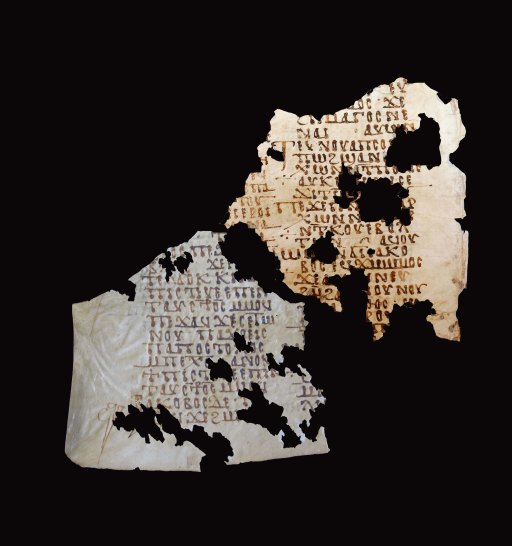 (Copyrights: Leiden University Library & Montserrat Abbey. Collage: Alin Suciu)
(Copyrights: Leiden University Library & Montserrat Abbey. Collage: Alin Suciu)
From here, however, things become more obscure because it is not clear whether Fr. Roca-Puig purchased his fragment from von Scherling or, rather, that they both acquired their fragments from the same source, one still unidentified. In my article, I remarked that some of the manuscripts in von Scherling’s collection and those of Father Roca-Puig must come from the same source.
This became clear to me only when my friend, Brice Jones, asked my opinion some time ago about a small palimpsest parchment fragment in the collection of McGill University in Montreal. In fact, this apparently insignificant fragment in terms of size and content (the superior script is from a magical text while the scriptio inferior gives the text of 2 Samuel in Sahidic) comes from a manuscript of which large portions are preserved in the Roca-Puig collection in Montserrat (published by Sofía Torallas Tovar in her Biblica Coptica Montserratensia [2007]).
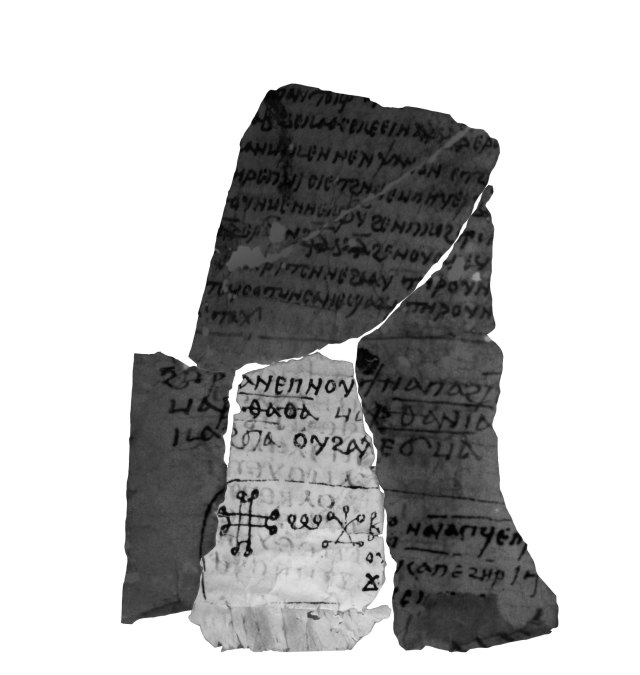 (The contiguity of the Montreal and Montserrat fragments. The Montreal fragment is light colored)
(The contiguity of the Montreal and Montserrat fragments. The Montreal fragment is light colored)
As the library records consulted by Brice[2] state explicitly that the item was sold by Erik von Scherling to McGill University, this fragment is another piece of evidence revealing that the collections of von Scherling and Roca-Puig shared different fragments from the same manuscripts. The next step for the manuscript snoops is to identify the mysterious dealer from which both collectors acquired their fragments.
2. More on the von Scherling Manuscript Fragments
In the same issue of the Bulletin of the American Society of Papyrologists there is another article concerning the von Scherling collection by Klaas Worp and Renate Dekker: “Missing Papyri: The Greek and Coptic Papyri in the von Scherling Papyrus Collection.” This article continues the research on the von Scherling collection started by Worp in his “Back to Oegstgeest: The von Scherling Papyrus Collection,” BASP 44 (2007) 39-47 and “Some von Scherling Texts in Minnesota,” ibidem 48-73, in order to identify the current whereabouts of the Greek and Coptic manuscripts sold by von Scherling. I know that Peter Kidd (ex-British Library, Bodleian Library), who contacted me on this issue, is attempting to do the same with the von Scherling Latin manuscript fragments.
To that end, the two scholars extracted from von Scherling’s magazine Rotulus all the references to Greek (Worp) and Coptic (Dekker) papyrus and parchment manuscripts. This is, indeed, a research that must be done. As Worp rightly remarks,
the systematic collection of the data from Rotulus allows one to see that, in this periodical, a number of papyri were offered for sale that may claim some special interest, even while they are currently residing in some unknown private collection … Only so much is certain that v[on] S[cherling] sold papyri not only to institutions and libraries, but also to private collectors, and that in general he had rather frequent contact with customers in the United States of America. Therefore, it is only reasonable to suppose that some v[on] S[cherling] papyri may be kept somewhere in a (private) collection, in particular in the USA. Searching for these texts is tantamount to searching worldwide for a needle in a haystack, but sometimes chance helps the retrieval of items that were lost for a long time, hence a publication of a list of these missing papyri may be useful. (“Missing Papyri,” 176-177)
Renate Dekker, who reviewed the Coptic documents transacted by von Scherling, did an excellent job in tracking some of them. For example, she also realized, independently from myself, that Schøyen MS 2007 (Acts of Philip) and Leiden Cod. Or. 14.331 (Acts of James) are the two fragments described in 1949 in Rotulus.
When I found the issues of Rotulus available online, I also extracted from them the references to Coptic manuscripts, but my interest was limited to those of literary character (i.e. not the documentary and magical ones). Ever since, I have kept my own records of the trajectory of von Scherling’s manuscripts. Here is one such example.
Some points regarding the von Scherling Coptic manuscripts can be added to the information supplied in the important article by Worp and Dekker. I should like to mention here, briefly, only that numbers 2210 (a parchment fragment of the Gospel of Matthew in Bohairic) and 2220 (parchment; Psalms 36-37 in Sahidic) have resurfaced recently. The photos of these two items were sent to me for preliminary evaluation by one of the major auction houses. I am not sure, however, if the current owner has only made an enquiry or if the fragments will really come up for sale. If they are indeed offered for sale, we should keep our eyes open.
Both pieces that I saw are interesting for Coptologists. I would particularly underline the importance of the Bohairic fragment of Matthew, which looks quite old for such a document. As the standard edition of Matthew in the Bohairic dialect, made a long time ago by George Horner, is based on quite late manuscripts, it is always interesting to find portions of this gospel in what seem to be older manuscripts.
We will soon see if these two fragments of the von Scherling collection will enter into the scholarly circuit or, rather, they will still wander through the unmapped territory of private collections.
Notes:
[1] A. Suciu, “Three Fragments from a Coptic Codex of the Apocryphal Acts of the Apostles,” Bulletin of the American Society of Papyrologists 49 (2012) 241-250
[2] See B. Jones, “A New Coptic Fragment of 2 Samuel 10:13-14, 17-18 (McGill MS NO Coptic 2),” Zeitschrift für Papyrologie und Epigraphik 184 (2013): 126-130










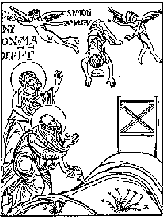




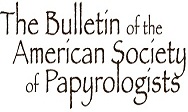
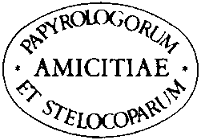
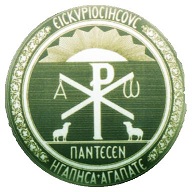





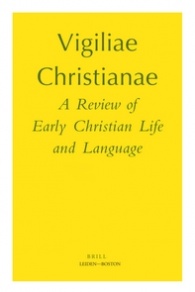






Dear Alin,
First of all, I would like to congratulate you on your website on ‘Patristics, Apocrypha, Cpotic Literature and Manuscript.’ It is clean and crisp and exceptional!
I believe I found a missing word in the paragraph below. I have posted in red the word I believe may be missing from the sentence. The paragraph can be found directly below the picture of the manuscript taken from the Christie’s site.
Here is the link: https://alinsuciu.com/2012/05/31/christies-auction-of-an-early-christian-papyrus-document/
Text: “After I examined the picture, I discussed this papyrus with Wolf-Peter Funk and we came to some conclusions. In all certainty, the document is of high interest, being perhaps one of our earliest Coptic literary manuscripts (4th century AD?). This is suggested not only by the script and dialectal features, but also by the fact that it comes from a papyrus roll, not a codex, and Coptic literary scrolls are very rare. However, I do not understand the reason why it was given the descriptor a �Manichaean Psalm� since it does not feature any clear Manichaean theme. Furthermore, the dialect of the text is not Akhmimic, but rather a variant of the so-called �dialect I.�
On a personal note, I would like to learn to read Coptic. In your own estimation, Alin, what is a good academic/practical resource for learning to read Coptic?
Sincerely, Alistair McPherson PhD student: Theology, Biblical Studies/Biblical Languages.
Alistair McPherson Instructor College of General Studies
(434) 485-9564
LIBERTY UNIVERSITY Training Champions for Christ since 1971
From: Alin Suciu <comment-reply@wordpress.com> Reply-To: Alin Suciu <comment+eyk1syfjcjfc6evkqic0naj@comment.wordpress.com> Date: Sunday, December 8, 2013 12:53 PM To: Alistair McPherson <amcpherson@liberty.edu> Subject: [New post] Two New Articles on the von Scherling Collection of Coptic Papyri
Alin Suciu posted: “1. Fragments of a Sahidic Codex of the Apocryphal Acts of the Apostles My new article, which concerns three fragments from a Sahidic manuscript containing the Apocryphal Acts of the apostles, appeared a few days ago in the latest issue of the Bulletin of”
Thanks for all that Alin!
Just saw today in AWOL that the BASP is now available online:
http://quod.lib.umich.edu/b/basp/
BASP 49 will become availabe onlinein due courseoft ime, no doubt, but some (Good?) things take some timet to come.